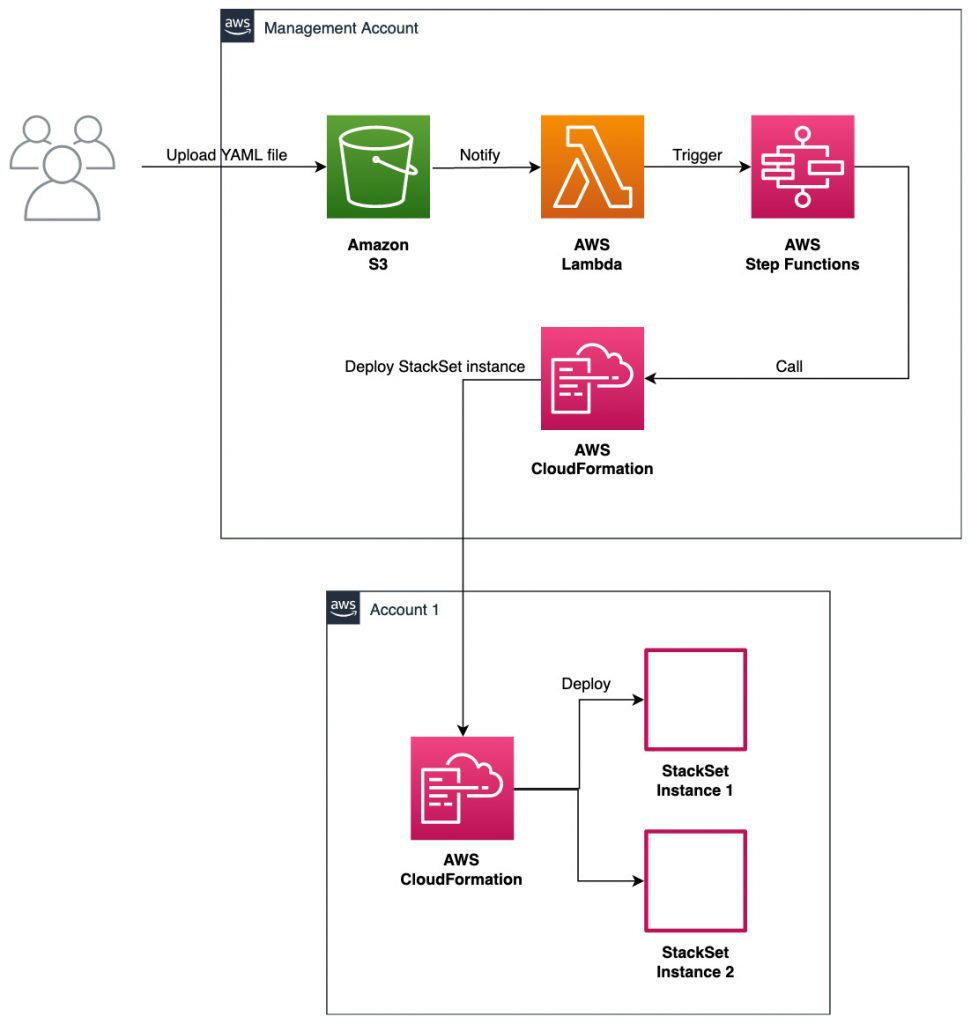AWS Cloud Operations & Migrations Blog
Category: AWS Control Tower
Customizing account configuration with AWS Control Tower lifecycle events
In this blog post, we show how to customize the networking configuration in an AWS account. For example by deleting the default VPCs in all AWS Regions, using AWS Resource Access Manager to share the appropriate VPC subnets and using AWS Firewall Manager to apply security groups to VPCs in the account.
Manage Control Tower life cycle actions intelligently using AWS Service Catalog, AWS Config, Amazon DynamoDB and AWS CloudFormation
As customers create and manage multi-account AWS environments, cloud administrators need to process where each account can apply configuration autonomously from a centralize configuration repository. Some of the customers I work with use AWS Control Tower to manage a multi account environment. Administrators use AWS Control Tower to create organization units for account grouping and […]
AWS CloudFormation StackSet Orchestration: Automated deployment using AWS Step Functions
We often use AWS CloudFormation StackSets to automatically deploy infrastructure into many different accounts. Whether they are managed by AWS Control Tower or AWS Organizations, StackSets provide a simple and automated way to handle the creation of resources and infrastructure right after provisioning a new account. You can automatically deploy StackSets to accounts that belong […]
Enabling Amazon GuardDuty in AWS Control Tower using Delegated Administrator
My customers have asked how to monitor their AWS environments for potential malicious activity. Many have standardized on using AWS Control Tower to implement a multi-account framework that is governed and based on known AWS best practices. They are also interested in enabling Amazon GuardDuty to supplement this with effective monitoring capabilities. This post shows […]
Extend AWS Control Tower governance using AWS Config Conformance Packs
As many customers adopt AWS Control Tower, they have asked Raphael and me how to add additional governance policies such as the NIST Cybersecurity Framework (CSF) to their environments on top of the guardrails that AWS Control Tower provides. Customers want to enable these additional policies on the AWS Regions where AWS Control Tower is […]
Automating Service Limit Increases and Enterprise Support with AWS Control Tower
In this post, we show how you can use Account Factory in AWS Control Tower to provision new accounts that are ready for your teams to use. We demonstrate how you can use AWS Control Tower lifecycle events to automatically request regional service quota limit increases and enrollment in AWS Enterprise Support using the respective […]
VPC Flow Log automation using AWS Control Tower LifeCycle
In this blog post, I show you how to expand AWS Control Tower centralized logging strategy to cover Amazon VPC Flow Logs. Using this solution, you can manage VPC Flow Logs across multiple accounts with self-service automation and periodic consistency check.
How to automate the creation of multiple accounts in AWS Control Tower
Last updated 24 Feb 2022 to support submission of 300+ account entries per each deployment. Last updated 17 Nov 2021 to handle the changes to Account Factory inputs parameters with Nested OU support. Last updated 25 JUL 2021 to pass account details from local S3 bucket. Many customers that we work with are creating and […]
Enabling AWS IAM Access Analyzer on AWS Control Tower accounts
Many of the customers we work with look for ways to manage compliance and gain additional insights across their AWS multi-account organization from a central location. We often begin the discussion with AWS Control Tower, as it offers the easiest way to set up and govern a multi-account AWS environment. AWS Control Tower is an […]
Implementing Serverless Transit Network Orchestrator (STNO) in AWS Control Tower
Introduction Many of the customers that we have worked with are using advanced network architectures in AWS for multi-VPC and multi-account architectures. Placing workloads into separate Amazon Virtual Private Clouds (VPCs) has several advantages, chief among them isolating sensitive workloads and allowing teams to innovate without fear of impacting other systems. Many companies are taking […]









